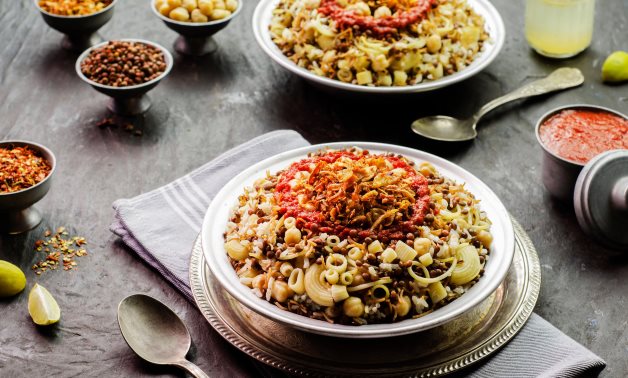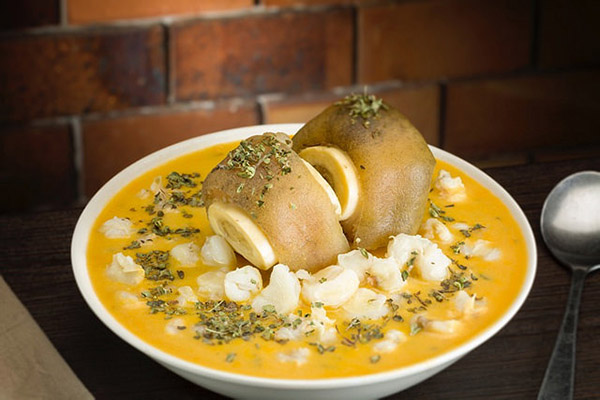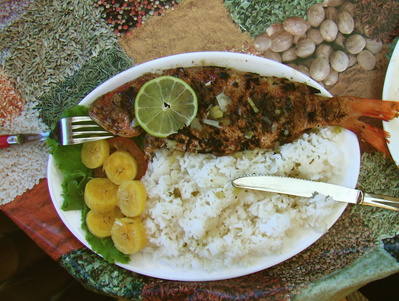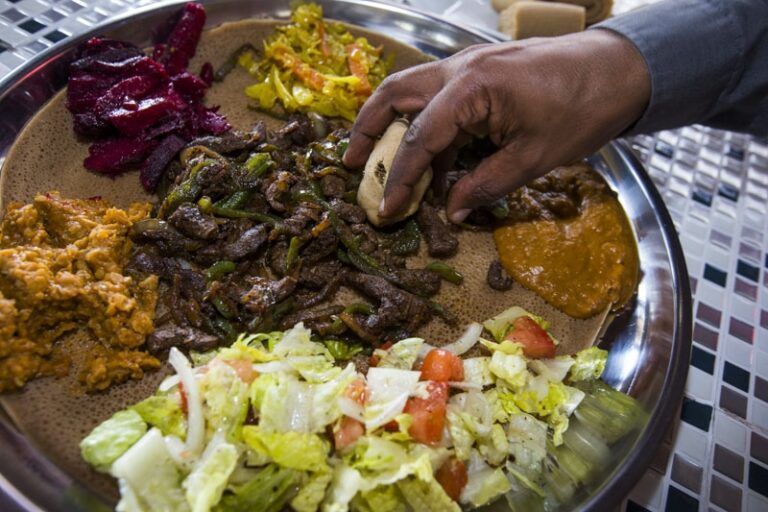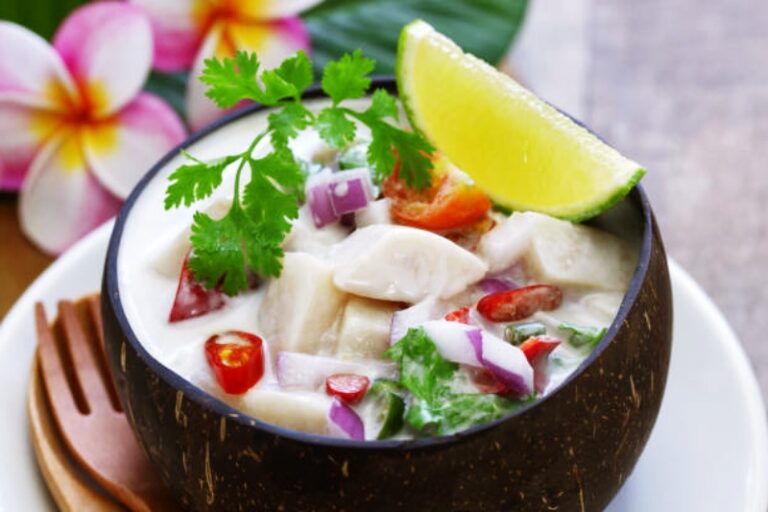Introduction: Traditional Snacks and Appetizers in Egypt
Egyptian cuisine is known for its rich flavors and exotic ingredients. Among the many dishes that make up this cuisine, snacks and appetizers stand out as some of the most beloved and flavorful. From hearty dishes like ful mudammas and koshari to savory pastries like hawawshi and kebda iskandarani, Egyptian snacks and appetizers offer a wide range of flavors and textures.
Ful Mudammas: A Staple Dish in Egyptian Cuisine
Ful mudammas is a dish that has been enjoyed in Egypt for centuries. It is a hearty and filling snack made from cooked fava beans that are mashed and seasoned with olive oil, lemon juice, garlic, and salt. Ful mudammas is usually served with pita bread and is a staple breakfast food in Egypt.
Koshari: A Popular Street Food in Egypt
Koshari is a popular street food in Egypt that combines a variety of ingredients and flavors. It is made from a mix of rice, lentils, macaroni, and chickpeas, topped with a spicy tomato sauce and fried onions. Koshari is a filling and satisfying meal that can be enjoyed at any time of the day and is often served in small portions as a snack.
Taameya: A Middle Eastern Twist on Falafel
Taameya, also known as falafel in other parts of the Middle East, is a popular snack in Egypt that is made from ground fava beans, onions, and spices. It is then shaped into small balls and deep-fried until crispy on the outside and soft on the inside. Taameya is usually served with pita bread and a variety of dipping sauces, such as tahini or hot sauce.
Hawawshi: A Meat-Filled Pastry Delight
Hawawshi is a savory pastry that is stuffed with ground beef, onions, and spices. The pastry is then baked until golden brown and crispy on the outside. Hawawshi is often served as a snack or appetizer and is a popular street food in Egypt.
Molokhia: A Soupy and Nutritious Treat
Molokhia is a traditional soup made from jute leaves that are cooked in chicken broth with garlic and spices. The dish is often served with rice and is considered to be a nutritious and filling meal. Molokhia is a popular dish during Ramadan and other special occasions in Egypt.
Kebda Iskandarani: Grilled Liver with a Twist
Kebda iskandarani is a dish that features grilled liver that is seasoned with spices and served on a bed of onions and tomatoes. The dish is often served with pita bread and is popular among street vendors in Egypt.
Basbousa: A Sweet and Sticky Egyptian Dessert
Basbousa is a sweet dessert made from semolina flour, sugar, and butter. It is often flavored with rosewater and topped with almonds or other nuts. Basbousa is a popular dessert during Ramadan and other special occasions in Egypt.
Conclusion: Exploring the World of Egyptian Snacks and Appetizers
Egyptian snacks and appetizers offer a wide variety of flavors and textures that are sure to satisfy any palate. From hearty dishes like ful mudammas and koshari to savory pastries like hawawshi and kebda iskandarani, there is something for everyone to enjoy. Whether you are looking for a quick snack on the go or a satisfying meal, Egyptian cuisine has it all.

